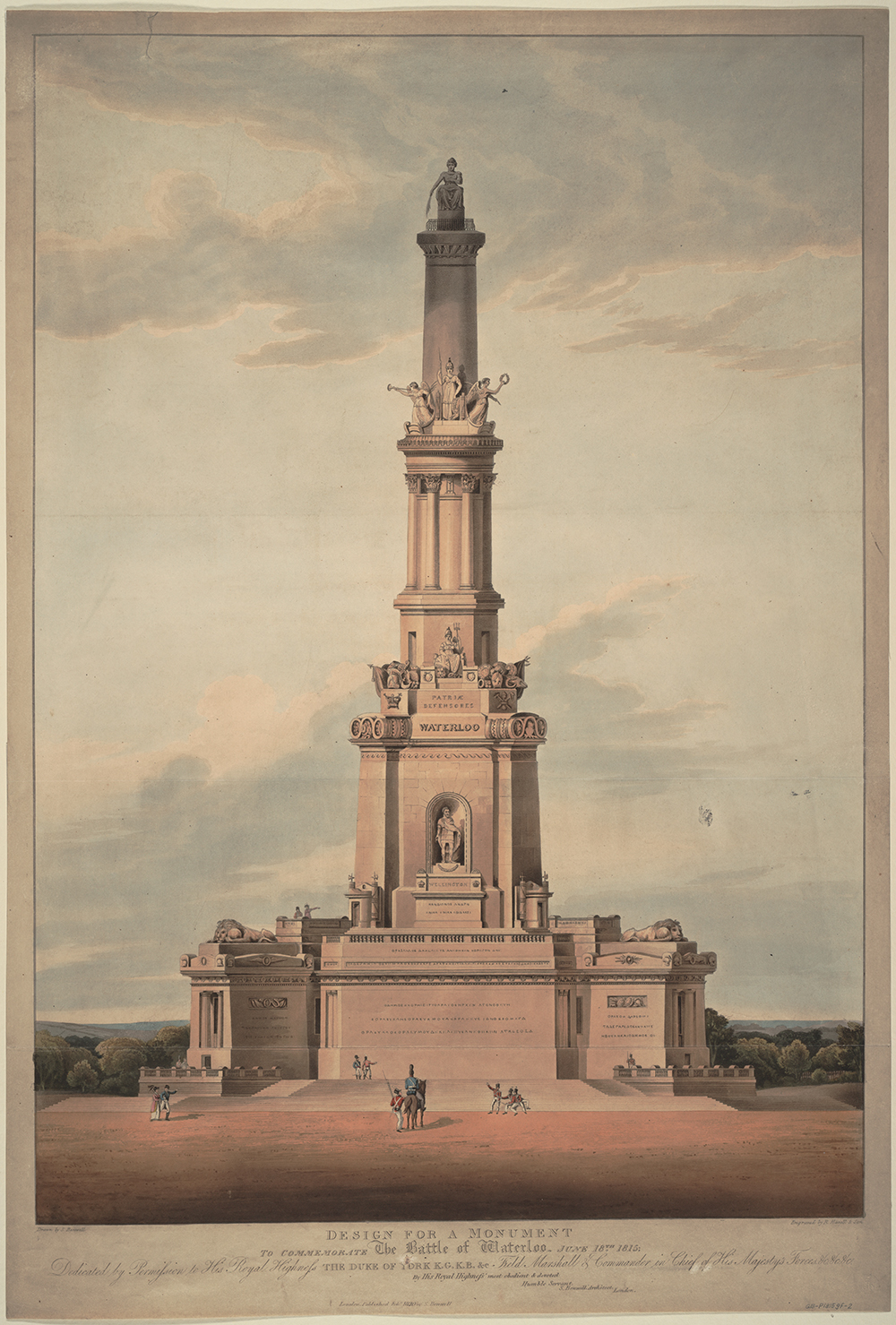Commemoration

The battle of waterloo has maintained a prominent place in the public consciousness since 1815. Nations have sought to keep the memory of the event alive and the solemnity of the battlefield intact. Commemorative efforts have taken place both on- and off-site over the years. These campaigns were memorialized through the erection of various monuments throughout the area, including the Lion Mount, as well as the preservation of notable sites such as Hougoumont, La Haye Sainte, and La Belle Alliance. These continue to draw visitors to the battlefield. Waterloo has been memorialized through dedicated landmarks and named spaces in major European cities to remind citizens about the significance of the event. While the centenary fell during the particularly dark year of 1915, the sesquicentennial in 1965 witnessed major events and re-enactments in many countries. Such commemorative events remain popular today, but are often fiercely contested for issues of sensitivity and international relations.
Items on Display
-
The Grand Opening of the New Waterloo Bridge
Artist unknown
London, G. Thompson, 1817
Hand-colored Engraving 16 x 23 cm
Edinburgh, J. Ballantyne for A. Constable, 1815
On June 18, 1817, the second anniversary of the Battle of Waterloo, London was teeming with festivities. This print illustrates the commemorative activities and pomp that surrounded the new Waterloo Bridge dedicated in London on that day. The image identifies the major figures present at the event, such as the Prince Regent and the Duke of Wellington, as well as the important vessels, guards, and the celebratory artillery firing. -
Waterloo Place, Carlton House
Augustus Charles Pugin (artist)
Thomas Sutherland (engraver)
London, c. 1820
Hand-colored aquatint 26.7 x 35.4 cm
Carlton House was the London residence of the Prince Regent for several decades, beginning in 1783. This view of the approach to the residence across Waterloo Place, the junction of several roads, is representative of the type of urban improvements in Regency London for which architect John Nash was responsible. Nash was a proponent of the picturesque in architecture and laid out the official ceremonial route through the city, which included commemorative sites and named places and parks. Waterloo Place was constructed and named as part of this route. -
Au Courage Malheureux
Artist unknown
Paris?, c. 1815
Engraving 22.5 x 31 cm
This engraving depicts an allegorical memorial to Napoleon’s Imperial Guard, a group of elite soldiers under the emperor’s direct command. The imagery in the print and engravings on the funeral monument or sarcophagus acknowledge the regiment’s many great victories and commemorate their final defeat at Waterloo. -
“Waterloo – La Haie Sainte”
Waterloo Views and Battle Scenes
Maurice Dubois (artist)
Benjamin Couprie (publisher)
Sepia reproduction, early 20th century
La Haye Sainte is a walled farmhouse complex in the central battlefield area of Waterloo. Like Hougoumont, this structure became a major combat location, as both sides saw its strategic potential as a stronghold. -
“Waterloo – Hougoumont”
Waterloo Views and Battle Scenes
Maurice Dubois (artist)
Benjamin Couprie (publisher)
Sepia reproduction, early 20th century
This souvenir image shows the famous farmhouse that was central to the battle. The farm at Hougoumont remained active until the late 20th century. Currently, fundraising and preservation efforts are working to restore and protect the ruins. -
“Waterloo – Mont St. Jean”
Waterloo Views and Battle Scenes
Maurice Dubois (artist)
Benjamin Couprie (publisher)
Sepia reproduction, early 20th century
At the time of the battle, Mont St. Jean was a farm complex on the far extent of the Waterloo landscape. Fighting between the French cavalry and the British infantry occurred at this site. The area has now developed into a small village, but still retains its deep connection to the history of the great battle. -
“Le Monument Français de Waterloo”
Waterloo Views and Battle Scenes
Maurice Dubois (artist)
Benjamin Couprie (publisher)
Sepia reproduction, early 20th century
This monument, often called "The Wounded Eagle", was sculpted by Gérôme and unveiled in 1904. It is dedicated to the memory of the last soldiers of the Great Army of France. -
Description of the Field of Battle and Disposition of the Troops Engaged in the Action, Fought on the 18th of June, 1815, near Waterloo; Illustrative of the Representation of that Great Event, in the Panorama, Leicester-Square
London, Barker, 1818
Exhibit flyer
Panoramic painting exhibits were popular in the 18th and 19th centuries as a way to gain an illusion of reality through an immersive experience with an image. Viewers would walk into a large cylindrical room in which they were surrounded by a painted scene. Irishman Robert Barker patented the plans for the first building to exhibit panoramic paintings, and constructed it in Leicester Square in London. His son, Henry Ashton Barker, continued his father's business, running the Panorama and programming exhibits such as the Explanation of the Battle of Waterloo in 1818, which would have cost viewers one shilling. -
The Battle of Waterloo: Being a Description of the Large Model Constructed by the Historian Captain William Siborne and Exhibited in the Museum
London, Royal United Service Museum, Whitehall, 1909
Founded in 1830, the Royal United Service Museum was a central repository in London for historical objects of comprehensive subject matter. Captain Siborne's model of the Battle of Waterloo was an elaborate and well-known object in the museum's collections. This publication narrates the battle at the precise moment from which Siborne created his model. -
"The Great Battle 150 Years Ago: Waterloo"
Thomas N. Carmichael
Life, Vol. 58, No. 23, June 11, 1965
Life Magazine honored the sesquicentennial of the Battle of Waterloo with a commemorative cover story. -
"Waterloo"
Paris Match, November, 1969
This excerpt from a commemorative article in a French magazine was published shortly after the sesquicentennial, at the time the movie Waterloo was released.
